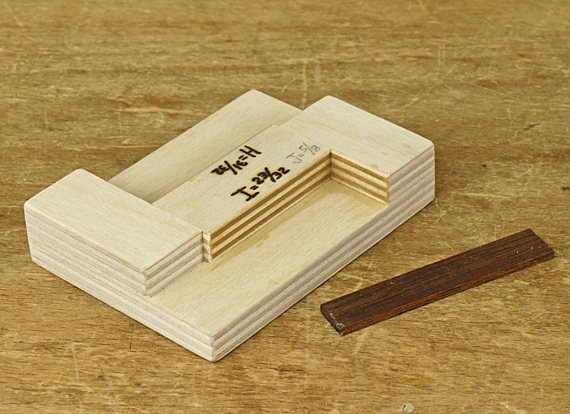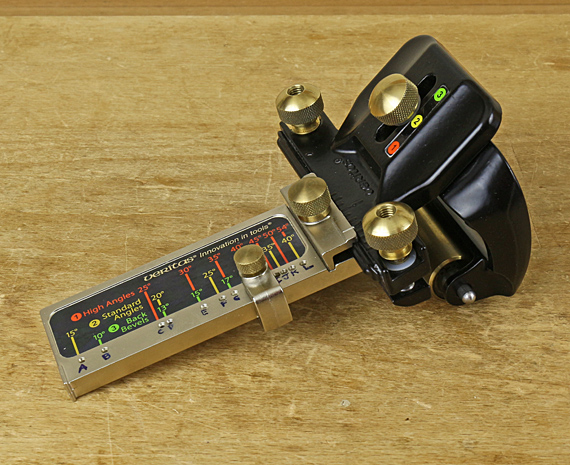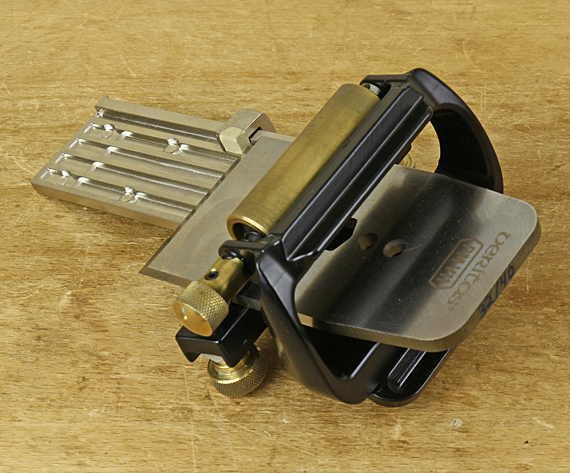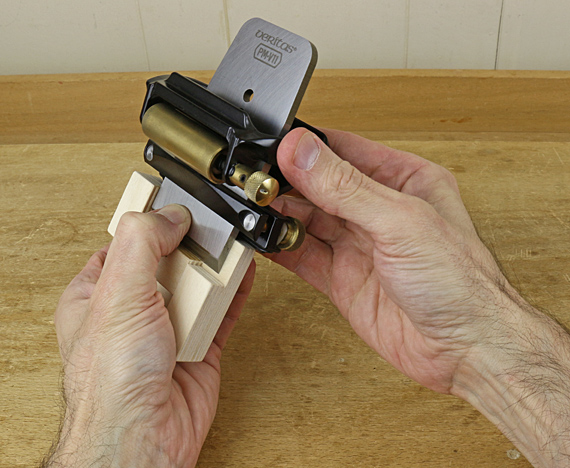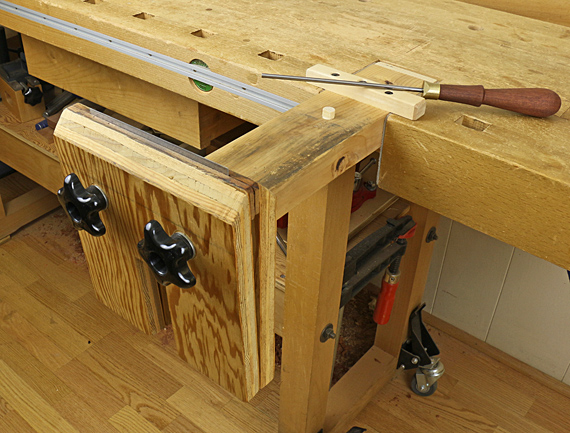
I built this as a saw-sharpening vise long ago from directions on page 16 of the 1979 book Tage Frid Teaches Woodworking – Joinery: Tools and Techniques. After considerable modification, it has long since become my dedicated scraper-sharpening vise.
In its original form, the vise was designed to secure the saw blade by the vise itself being clamped into the front vise of the workbench. I made the long notch in the lower part of the jaws to clear the vise screw but it is no longer functional. Now instead, the jaws are tightened by the two star knobs at the ends of carriage bolts.
The 8″ jaws are faced with hardwood, which allowed me to tune their apposition, including planing a slight camber along the length. The angle at the top of the jaws provides clearance for tools and hands. The jaws grip just fine without a leather lining, which would tend to grab and accumulate metal filings.
What makes my design really different is the vise is lag-screwed into the end of a 14″ length of 2×4. At the other end of the 2×4 you can see the L-shaped cleat that hooks under the steel plate of the tail vise. Along with the top cleat that contacts the bench surface, this makes the whole setup rock solid when the tail vise is tightened.
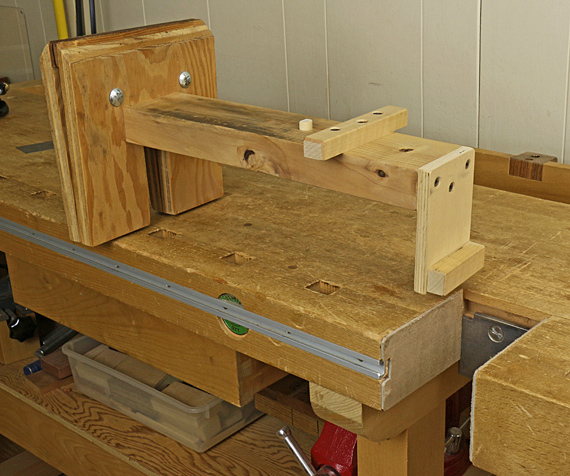
The 2×4 extension piece serves as a handy platform for diamond stones, and for running the burnisher along the side of the scraper. The removable dog acts as a stop. The extension also keeps the vise well away from the workbench to prevent metal filings from defiling it.
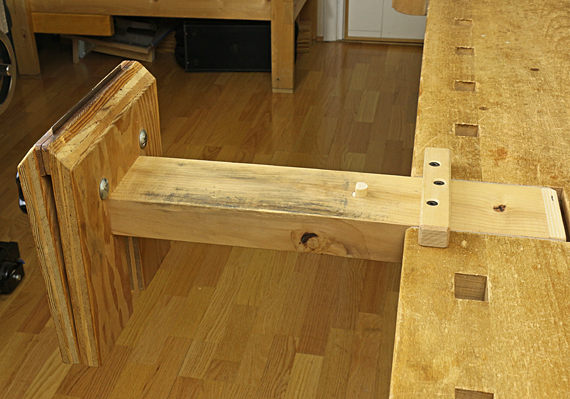
Of course, the vise is systematized with my method for sharpening scrapers. I do all of the work on the edges of the scraper – filing, diamond stoning, and burnishing – with the scraper clamped in this vise. I’ll save the details of that for another post but here I’ll say that scraper sharpening is easy, and I highly recommend a polished carbide burnisher.

